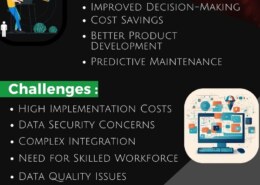What is the impact of digital technology and e-books on traditional print literature, and how is the reading experience changing in the digital age?
The question of whether AI robots will be able to replace human teachers in the future is complex and involves several dimensions—technological, educational, and humanistic. Here are some key points to consider: 1. Technological Capabilities Current AI Limitations AI can handle tasks like grading, pRead more
The question of whether AI robots will be able to replace human teachers in the future is complex and involves several dimensions—technological, educational, and humanistic. Here are some key points to consider:
1. Technological Capabilities
- Current AI Limitations
- AI can handle tasks like grading, providing personalized feedback, and even delivering lectures. However, it still lacks the ability to fully understand and respond to the nuanced needs of individual students, particularly in terms of emotional and social support.
- Advancements in AI
- Future advancements could improve AI’s ability to interact with students more naturally and adapt to diverse learning styles. AI could potentially become more effective at teaching specific subjects, particularly those with well-defined knowledge and procedures.
2. Educational Effectiveness
- Personalization
- AI can offer personalized learning experiences by adapting content and pacing to individual students’ needs. This is particularly useful in large classes where individual attention is limited.
- Human Interaction
- Human teachers provide more than just knowledge—they offer emotional support, mentorship, and motivational encouragement. They can also model social behavior, empathy, and critical thinking skills, which are vital aspects of education.
3. Social and Emotional Learning
- Empathy and Relationships
- Human teachers build relationships with students, understand their unique needs, and provide a level of empathy and emotional support that AI cannot currently replicate. This human connection can be crucial for student engagement and well-being.
- Classroom Dynamics
- Teachers manage complex classroom dynamics and adapt to diverse social situations in ways AI currently cannot. The ability to navigate these dynamics and foster a positive learning environment is a significant part of effective teaching.
4. Practical Considerations
- Cost and Implementation
- Implementing AI on a large scale could be expensive and logistically challenging. There are also concerns about data privacy and the ethical use of AI in education.
- Teacher Roles
- Even if AI becomes more prevalent, human teachers are likely to play an essential role in education. They might focus more on mentoring, facilitating discussions, and addressing the emotional and social aspects of learning.
5. Future Possibilities
- AI as a Supplement
- AI is more likely to serve as a supplementary tool rather than a complete replacement. It can handle routine tasks, provide additional resources, and offer support to human teachers, enhancing their ability to focus on interactive and relational aspects of teaching.
- Hybrid Models
- Future educational models might combine AI with human teachers. For example, AI could handle personalized learning paths, while human teachers focus on developing critical thinking, creativity, and social skills.
Conclusion
While AI has the potential to significantly enhance and transform education, it is unlikely to fully replace human teachers in the foreseeable future. Human teachers bring essential qualities—empathy, social interaction, and the ability to understand complex emotional and social contexts—that AI cannot replicate. Instead, AI is more likely to augment the teaching process, providing tools and support that enhance the capabilities of human educators and improve the overall learning experience.
See less

The advent of digital technology and e-books has profoundly transformed traditional print literature and the reading experience. Here’s an overview of these changes: 1. Accessibility and Distribution Increased Reach: Digital technology has significantly expanded the reach of literature. E-books andRead more
The advent of digital technology and e-books has profoundly transformed traditional print literature and the reading experience. Here’s an overview of these changes:
1. Accessibility and Distribution
2. Changing Reading Habits
3. Economic and Environmental Implications
4. Preservation and Innovation
5. Challenges and Considerations
- Digital Divide: Access to digital literature requires technology and internet connectivity, which may exclude certain populations and contribute to the digital divide.
- Sensory Experience: Some readers and critics argue that digital reading lacks the tactile pleasure and aesthetic experience associated with traditional print books, including the feel of paper and the physical presence of a book.
See less